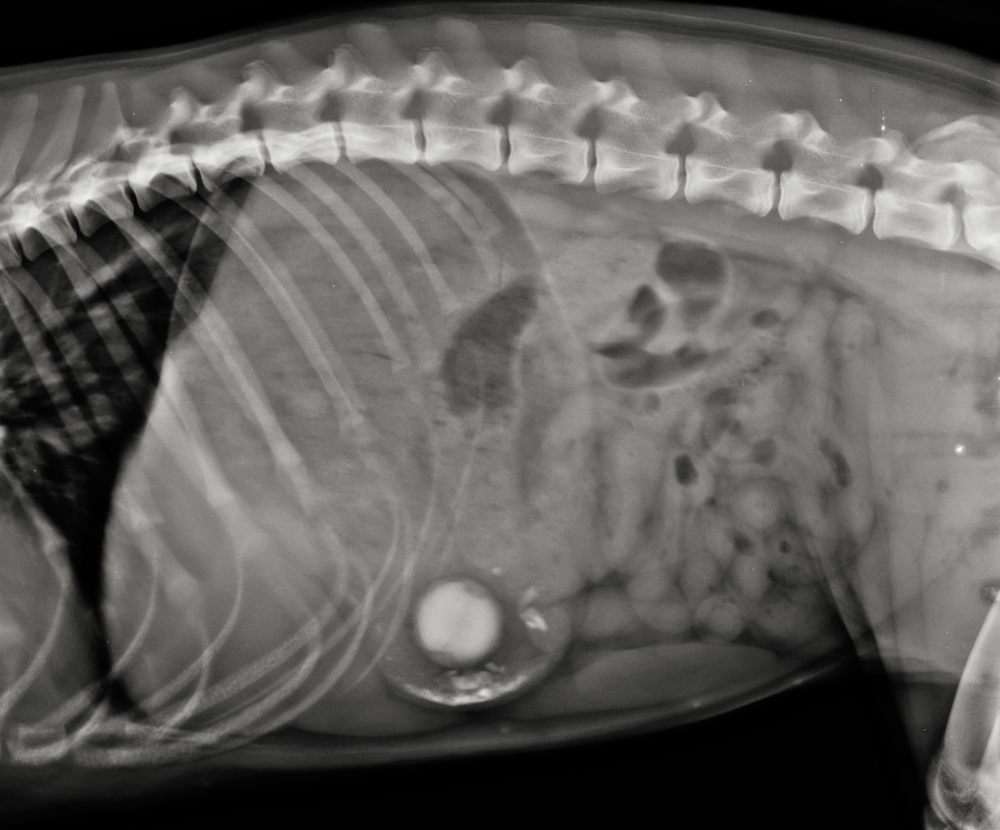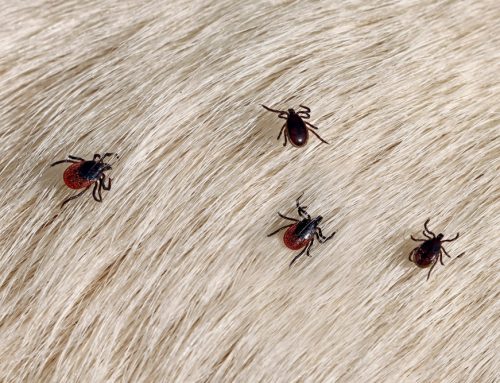Many pets investigate their world mouth first, and this behavior can lead to a gastrointestinal (GI) foreign body. These incidents are common in pets and require urgent veterinary attention. Our Best Friends Veterinary Care team knows how mischievous pets can be, and we offer information about GI foreign bodies and explain how the problem can be managed.
GI foreign body ingestion in pets
GI foreign bodies occur when your pet ingests an object that can’t be digested or readily pass through their intestine. Your pet’s digestive tract is a one-way system. If the object is still in the stomach, vomiting may bring it back up, but once an item reaches the small intestine, it is committed to moving through the intestinal tract. Young pets are at the highest risk for ingesting a foreign body, but pets of any age and size can ingest something they shouldn’t.
- Dogs — Objects commonly ingested by dogs include plastic balls, squeaky toys, bones, corn cobs, rocks, sticks, plastic wrap, coins, socks, and toy pieces that they have destroyed. In addition, they can ingest sharp objects, such as fish hooks, that can damage their stomach and intestinal lining.
- Cats — Cats are notorious for ingesting linear objects, such as thread, shoelaces, or string. The spines on their tongue make spitting out the object difficult, and as the cat swallows, the object can become wrapped around their tongue base or lodged in the stomach. Other objects cats may ingest include rubber bands and small toys.
Problems depend on factors such as how long the foreign body is present, the location, how much the GI tract is obstructed, and the material ingested. GI foreign bodies, especially linear objects, can cause perforations in the intestinal lining, allowing the intestinal contents to spill into the abdominal cavity. This results in a severe, life-threatening condition called peritonitis. In addition, some ingested items may contain dangerous toxins that can leach into the intestinal tract.
GI foreign body signs in pets
Signs vary depending on the degree of obstruction, location, and duration. Potential signs include:
- Gastric foreign body — If the object can’t pass into the intestine, pets can exhibit acute and repeated vomiting. Other potential signs include lethargy and lack of appetite.
- Intestinal foreign body — Once the foreign body passes into the intestinal tract, signs resemble gastroenteritis and typically include vomiting and possibly diarrhea.
- Object around tongue — If a linear foreign body gets wrapped around the tongue base, signs can include excessive drooling, vomiting, and pawing at the mouth.
- Complete blockage — If a complete blockage occurs, signs can include vomiting or unproductive retching, bloating, and a painful abdomen.
- Intestinal perforation — Intestinal perforation is an emergency situation requiring immediate veterinary care. Signs include extreme lethargy, vomiting, and collapse.
GI foreign body diagnosis in pets
When a pet exhibits vomiting and other signs that may indicate a GI foreign body, possible diagnostics include:
- History — Our team gathers a thorough history to determine if you saw your pet ingest the foreign body or toxin. In addition, knowing the vomit contents can be helpful if pieces of a toy or string are present.
- Physical examination — We perform a comprehensive physical examination to assess your pet’s overall health and palpate their abdomen for distention or pain.
- Blood work — Blood work, such as a complete blood count (CBC) and biochemistry profile, is helpful to rule out other conditions that cause similar signs. These tests also help our team evaluate your pet’s hydration and electrolyte status.
- X-rays — X-rays can help reveal a foreign object in your pet’s GI tract.
- Contrast views — Contrast views using barium may be necessary to highlight the obstruction.
- Ultrasound — Ultrasound imaging also may be helpful to identify a GI obstruction.
GI foreign body treatment in pets
Treatment depends on many factors, such as object location, type, and your pet’s condition. Potential treatments include:
- Inducing vomiting — If the object is still in your pet’s stomach and not likely to cause damage to their gastric lining, we may induce vomiting to remove it.
- Endoscopy — An endoscope is a flexible tube that has a camera on the end. Endoscopy can help our team retrieve an item, such as a thread and needle, if it remains in your pet’s stomach.
- Fluids and monitoring — If the object has the potential to pass through your pet’s GI tract, we may recommend administering intravenous fluids and monitoring them. This usually involves retaking X-rays six to eight hours after IV fluids are started to monitor the object’s progress.
- Surgery — If the item has moved into your pet’s small intestine and can’t pass through their GI tract, surgery is necessary to remove the object. If the GI tract has been damaged, a section may need to be removed and the healthy ends reattached.
GI foreign body prevention in pets

Some GI foreign body cases can’t be prevented, but you can take steps to reduce your pet’s risk, such as:
- Securing objects — Put away objects, such as string, thread, small toys, balls, and socks, that your pet may be tempted to swallow.
- Avoiding bones — Never give your pet bones as treats. They can splinter easily into small pieces that your pet can ingest.
- Providing appropriate toys — Provide appropriately sized toys that your pet can’t potentially swallow.
- Ensuring toys are durable — Choose toys that can’t be destroyed easily, resulting in pieces your pet can ingest.
If you suspect your pet has ingested a foreign body, contact our Best Friends Veterinary Care team so we can assess the situation and provide the care they need.








Leave A Comment